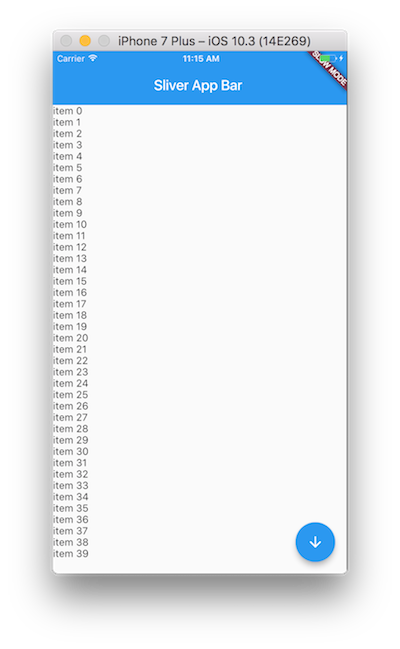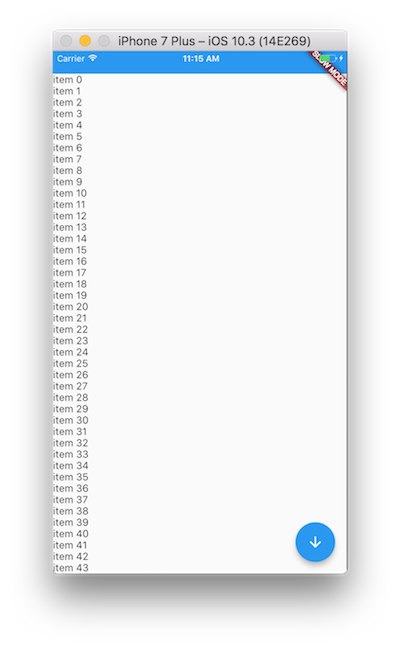You can use _scrollController.position.maxScrollExtent to scroll to the end. Make sure to do this in a post-frame callback so that it will include the new item you just added.
Here is an example of a sliver list that scrolls to the end as more items are added.
![before]()
![after]()
import 'package:flutter/scheduler.dart';
import 'package:flutter/material.dart';
void main() {
runApp(new MyApp());
}
class MyApp extends StatelessWidget {
@override
Widget build(BuildContext context) {
return new MaterialApp(
title: 'Flutter Demo',
home: new MyHomePage(),
);
}
}
class MyHomePage extends StatefulWidget {
State createState() => new MyHomePageState();
}
class MyHomePageState extends State<MyHomePage> {
ScrollController _scrollController = new ScrollController();
List<Widget> _items = new List.generate(40, (index) {
return new Text("item $index");
});
@override
Widget build(BuildContext context) {
return new Scaffold(
floatingActionButton: new FloatingActionButton(
child: new Icon(Icons.arrow_downward),
onPressed: () {
setState(() {
_items.add(new Text("item ${_items.length}"));
});
SchedulerBinding.instance.addPostFrameCallback((_) {
_scrollController.animateTo(
_scrollController.position.maxScrollExtent,
duration: const Duration(milliseconds: 300),
curve: Curves.easeOut,
);
});
},
),
body: new CustomScrollView(
controller: _scrollController,
slivers: [
new SliverAppBar(
title: new Text('Sliver App Bar'),
),
new SliverList(
delegate: new SliverChildBuilderDelegate(
(context, index) => _items[index],
childCount: _items.length,
),
),
],
),
);
}
}


